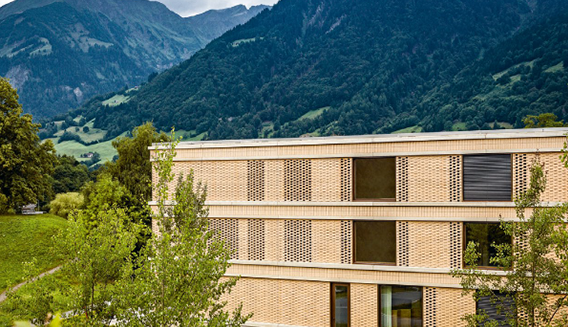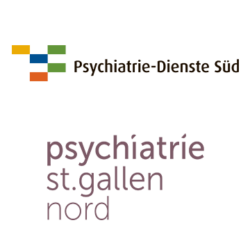Central SAP document archiving in the digital archive for all locations
The psychiatric associations of the Canton of St. Gallen incorporate two institutions: St. Gallen Cantonal Psychiatric Services – Sector North and St. Gallen Psychiatric Services South. More than 13,000 people per year receive outpatient, day-patient and in-patient care in their psychiatric centers and clinics. They produce hundreds of documents on a daily basis – from patient records to personnel files.
A crucial factor for us was a high level of market acceptance. When we assessed d.3ecm in more detail, we quickly realized that it met our requirements better than the other popular document management and archive solutions in the healthcare sector.
Daniel Schibli
Head of the Shared Service Center
Psychiatrie St.Gallen Nord
The project goal
adeon ag, a d.velop partner, uses the Enterprise Content Management system d.3ecm from d.velop to make these documents available electronically. The 2020 cooperation strategy reached by the two psychiatric associations in the north and south of the Canton of St. Gallen requires close collaboration between them. The IT strategy is built on three pillars, explains Daniel Schibli. As the head of the Shared Service Center “SSC-IT Psych,” he holds responsibility for both associations: “First, it involves reducing our dependency on software suppliers by storing our data and documents separately from the application. A close connection between the application and data binds the customer to the solution provider and any changes can come about only through data migrations.” By saving electronic data in an electronic archive, the psychiatric associations can eliminate this exit hurdle and have a more flexible choice of solution, Daniel Schibli continues.
The second pillar concerns e-health
“E-health provides access to patient data for patients, referring physicians and other stakeholder groups” To know what data and documents about a patient exist, they must be registered in a directory and stored in a way that enables external access. The patient data is therefore normally stored in an e-archive.
A shared document management system
Daniel Schibli refers to the consolidation of the portfolio as the third pillar. The companies had previously used different archiving solutions. “A higher-level goal of the IT strategy is to utilize synergies and save costs. One of the ways to do so is by introducing a shared clinic information system (CIS) and a shared archive for both companies.” As long ago as 2008, Psychiatric Services South chose d.3ecm to store its financial documents and its creditor workflow. It was a logical step for the IT team to test the suitability of d.3ecm for storing personnel and patient records. The new solution had to be future-proof and therefore to maintain a large number of technological standards, for proven interface technologies both inside and outside the health sector. Daniel Schibli says: “A crucial factor for us was a high level of market acceptance. When we assessed d.3ecm in more detail, we quickly realized that it met our requirements better than other popular document management and archive solutions in the healthcare sector.” The Head of IT therefore chose to deploy d.3ecm for both institutions.

A shared personnel record for both institutions.
For the initial higher-level IT infrastructure, the north and south psychiatric associations introduced a joint personnel record in 2014. Daniel Fisler, project manager for implementing IT solutions, explains: “While some departments already had electronic documents, others still worked with folders. For the first time, we had managed to establish an overarching standard.” The company adeon ag was entrusted with the task of introducing the electronic personnel record. It had already built the finance archives, a collaboration that Daniel Schibli was very happy with: “We have worked together with adeon for Psychiatric Services South for some time now. We also therefore had experience of what the collaboration involved, and knew that we had found in adeon a solution-based and technically competent partner with whom we could accomplish this project.”
To make past and future documents available in electronic form, they had to be scanned. To do so, the SSC-IT Psych application team installed around 70 desktop scanners at eight north and south psychiatric association locations in total. Staff – primarily secretarial staff – used them to scan personnel records, and later also patient records, at their local workplace. To date, around 75,000 documents have been scanned for HR administration alone. Daniel Fisler received positive feedback from HR managers: “Previously, their staff had to search through folders of personnel records; now, all the documents can be accessed with ease.” Another benefit of the solution: the elimination of “shadow records” kept by managers. Managers previously created such records about their staff because only the HR department had access to employee records. Thanks to d.3ecm, the records are now stored centrally and managers with the appropriate authorization can access them. Since d.3ecm is seamlessly integrated with the leading SAP HR system, every document within it can now simply be accessed with the push of a button.
Second step: the shared patient record
In Fall 2015, electronic personnel files were rolled out across all locations. The IT project staff from adeon and SSC-IT Psych then turned their attention to the patient records. Workshops were held to determine the exact requirements for the new system. The key requirement: that all the documents related to a patient should be available electronically. Daniel Fisler explains:
“The internal clinic information system (CIS) stores all the records and reports compiled in the north and south psychiatric associations. The collaboration with adeon ag is a perfect example of a professional partnership with a supplier. Thanks to d.3ecm, we can now access the documents in CIS and any other documents – such as laboratory findings, medical certificates or reports from referring physicians or the authorities. The primary benefit: authorized people can view full patient records any time and anywhere.”
The solution can also be integrated into any future e-health associations in the Canton of St. Gallen without any problems. The creation of new records is one issue. Making earlier written patient records available electronically is another. Sector North had already scanned some documents beforehand; however, these documents were only stored as PDFs in the internal CIS. With 200,000 documents, this archive was reaching its capacity limits. There was no full-text search. The transfer of all the existing documents to a central, clearly structured patient repository with d.3ecm created a limitless capacity. 200,000 documents automatically indexed for the full text search. The business units in both psychiatric associations were able to decide for themselves whether to scan only the latest documents with full-text indexing or to include old ones. Prior sorting was crucial for speedy storage. Daniel Fisler explains: “In a conventional patient record, you can find all different kinds of documents, from sticky notes, to receipts in DIN A5 format, to laboratory reports. To arrange them for scanning, staff provided them with special bar code dividers. A thick stack can include up to 40 dividers. Thanks to them, the system automatically detects where separation is required during scanning and indexes the individual documents accordingly.”

The implementation
The path from the decision to productive operation was, according to the responsible project manager, “short and unspectacular,” with unspectacular meant wholly as a positive. It expresses how little time resources were needed, and how there were no problems to deal with, even though they were managing two projects in parallel. “That was the special thing about this project,” says Markus Graf, “that it ran so smoothly alongside the SAP rollout. We were able to carry out most of it with our own staff. We needed only a fraction of the costed external project days, because everything was prepared. Even the SAP interface was already available.”
d.velop was always there when support was needed, and training took the form of learning by doing. d.velop showed staff what they needed to do and the staff were then able to carry out the processes autonomously. “The paths of communication with d.velop are short, direct and let you reach your responsible contact person immediately, which keeps response times to a minimum,” explains Markus Graf, Head of IT. Since the SAP go-live date, archiving has also been based on d.3ecm. Obsolete files were not transferred. Throughout the whole implementation of the projects, Pietsch proved itself to be a hugely competent user and did much of the work itself, from planning to implementation.
A total of roughly 200,000 documents were transferred automatically using a predefined mapping table. Any open outpatient case files are now scanned in as needed by the secretarial team. To an outsider, the question automatically arises: can all paper documents now be dispensed with? To meet legal archiving requirements, two conditions must be fulfilled, explains Daniel Fisler: “First, there must be qualified proof that the scanned document is an actual copy of the unaltered original. d.3ecm ensures this traceability through electronic document signatures. Second, the procedure of how the documents reach the archive must be described. At present, we are working on this documentation process. We will then have the procedure audited – and can then dispense with all paper documents.”
For both St. Gallen psychiatric associations, the patient record in d.3ecm is the key to making all the new and many of the old records available in the new and standardized CIS of the future. The electronic process for accepting a patient is now as follows: in the main administration system, Opale, the processor opens a patient master record. This also enters the patient in the CIS, where all the latest reports are noted, and in the d.3ecm patient archive. Records that a patient brings with them are scanned and stored immediately. As a result, staff treating a patient no longer need to search for records. Instead, they can display all the documents related to a patient from the d.3ecm system in their CIS (Medicare or Phoenix) with the push of a button.
d.velop was always there when support was needed, and training took the form of learning by doing. d.velop showed staff what they needed to do and the staff were then able to carry out the processes autonomously. “The paths of communication with d.velop are short, direct and let you reach your responsible contact person immediately, which keeps response times to a minimum,” explains Markus Graf, Head of IT. Since the SAP go-live date, archiving has also been based on d.3ecm. Obsolete files were not transferred. Throughout the whole implementation of the projects, Pietsch proved itself to be a hugely competent user and did much of the work itself, from planning to implementation.

The status
Several systems are used to ensure security and data protection. d.3ecm logs every search and every access: superiors can easily check when a record was accessed and by whom. Doctors and staff cannot access patient files at will, but need specific authorizations. General searches for patients are prevented; doctors only have access to records they need for their work. Furthermore, the new solution from d.3ecm complies with the statutory ten-year retention period for medical documents.
The advantage of d.3ecm is clear to Daniel Fisler: “There is greater transparency in the treatment process. The medical specialists now get an overall view of a patient instead of just the snippet from before. A paper record can only ever be on one person’s desk. In contrast, with d.3ecm, everyone with authorization can access information about a patient, regardless of the time or place.” All the data is stored centrally and with redundancy in highly secure server rooms. The two psychiatric associations have their own closed networks, which are connected to the Canton’s fiber network. The security provisions guarantee that no one can access the internal network from the outside.

